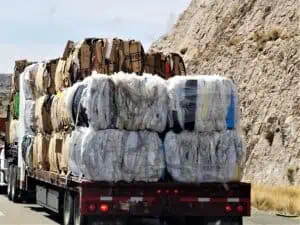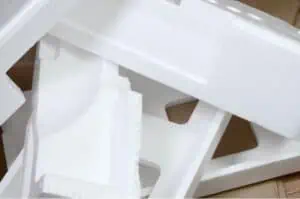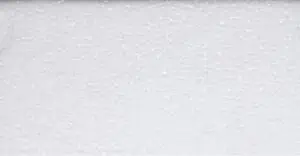There are a lot of benefits to recycling cardboard. It’s good for the environment, it supports the local economy, and it helps to conserve resources. If you’re like most business owners, you’re always looking for ways to reduce costs and recycle materials, and recycling cardboard is a great place to start. But how is cardboard recycled?
In this post, we’ll take a look at how cardboard is recycled and the main steps involved. By understanding the process, you can make sure your cardboard is disposed of properly and help keep the environment clean.
Cardboard Recycling Process: 7 Key Steps
So, how is cardboard recycled? The basic steps of recycling cardboard are fairly simple. However, the process itself is often a little more complicated than it seems, and this is why cardboard recycling is a job for professionals. The typical cardboard recycling process is as follows:
1. Collection
As with most types of recycling, the first step is to review all local and state laws concerning the disposal and collection of cardboard and other recyclables. If you’re unsure of the collection policies in your area, check with your local government offices. In Arizona, recyclables are often brought to the Materials Recovery Facility for repurposing.
2. Storage
Once you have collected all of your cardboard, it should be stored in an open space where it won’t become wet or contaminated with other non-cardboard materials. Cardboard is typically stored outside until it can be picked up by a professional recycling company. For some businesses that produce high quantities of cardboard, storage may be challenging. In this situation, it’s best to reach out to a recycling facility that can provide solutions.
3. Sorting
When the pickup trucks arrive to transport your cardboard, you will want to make sure that they are able to differentiate between different types of cardboard before loading it into their trucks. For example, corrugated boxes are made from two layers of paper board with a fluted center. Corrugated boxes can be broken down and recycled several times before becoming unusable but if other types of cardboard get mixed in, they cannot be recycled.
4. Crushing
After the trucks arrive at the recycling facility, it is time to start preparing and processing your cardboard. Cardboard is made from paper pulp and simply needs to be broken down into small enough pieces before it can be processed and reused. The more efficiently this process goes, the more money you save on transit costs.
5. De-Watering
A water separator removes any excess moisture from the cardboard material reclaimed during the recycling process. This helps reduce weight and volume, making transportation easier and cheaper.
6. Pulping
Once dewatered, the paper board must go through a pulper which breaks up all remaining lumps until sheets of paper pulp are formed. The water in these sheets is drained off and the pulped paper can be dried to form new cardboard for reuse.
7. Shredding and Mixing
After being dried, the recycled paper must be broken into smaller pieces through a shredder. The type of machine used will depend on your intended end use; if you wish to make new cardboard boxes, for example. After shredding, the pulp should be mixed with water again before being formed into new cardboard material using a mixture of chemicals.
Types of Paper and Cardboard That Can Be Recycled
Can all types of paper and cardboard be recycled? The short answer is yes; cardboard boxes and paper can be recycled as long as they aren’t contaminated with other materials such as plastic or glass. Some communities may even allow you to recycle waxed cardboard, although most do not due to the fact that non-cardboard contaminants become more concentrated when mixed with wax. If you’re ever unsure of the type of cardboard you are looking to recycle, reach out to nearby professionals who can assist you with sorting your materials.
5 Benefits of Recycling Cardboard
Knowing how to recycle cardboard benefits more than just the environment. When you properly dispose of cardboard, you will reap additional benefits such as:
Reducing Waste
The majority of paper and cardboard thrown away each year is not recycled. Extended producer responsibility laws now require manufacturers to take back their packaging once it’s been used by customers. This saves money and resources as you only need to produce the amount of packaging needed.
Saving Money
Not using as much raw material reduces costs, and so does recycling and reusing what we already have at our disposal. Recycling also removes the cost associated with sending your paper and cardboard trash to landfills or incineration plants.
Staying Compliant With Local Regulations
Keeping track of local regulations can be difficult for business owners who are juggling a lot of responsibilities at any given time. Some states have begun to ban certain types of materials from being disposed of in landfills, which can be time-consuming for business owners. Knowing how cardboard and paper are recycled keeps you compliant with local regulations, saves money on disposal costs, and reduces the amount of waste that ends up in landfills.
Increasing Brand Reputation
Making environmentally-friendly decisions is slowly becoming a requirement for maintaining a good brand reputation, and this includes knowing how to recycle cardboard. Sustainability efforts are also transparent, thus helping build trust among consumers who are now demanding more eco-friendly products.
Selling Waste Paper Back To Paper Mills
Cardboard boxes can typically be recycled several times before they become unusable, but once they reach the end of their life cycle, they might still contain some excess fibers. Selling excess paper and cardboard to paper mills saves money on processing costs and ensures that nothing is thrown away.
Cardboard Recycling Made Easy: Contact GMR
Now that we’ve answered, “How is cardboard recycled?”, it’s time to contact professionals and formulate a recycling plan.
Generated Materials Recovery (GMR) provides a full suite of waste reduction and industrial recycling services while also providing green solutions for your business. We have the experience to help you meet industry certification standards, allowing you to reduce costs, improve your carbon footprint, and receive tax benefits.
Our cardboard recycling process is carefully carried out and all machines are regularly maintained to ensure a consistently high-quality process that produces high-quality results.
Contact GMR today to find out how we can help your business with cardboard recycling.







